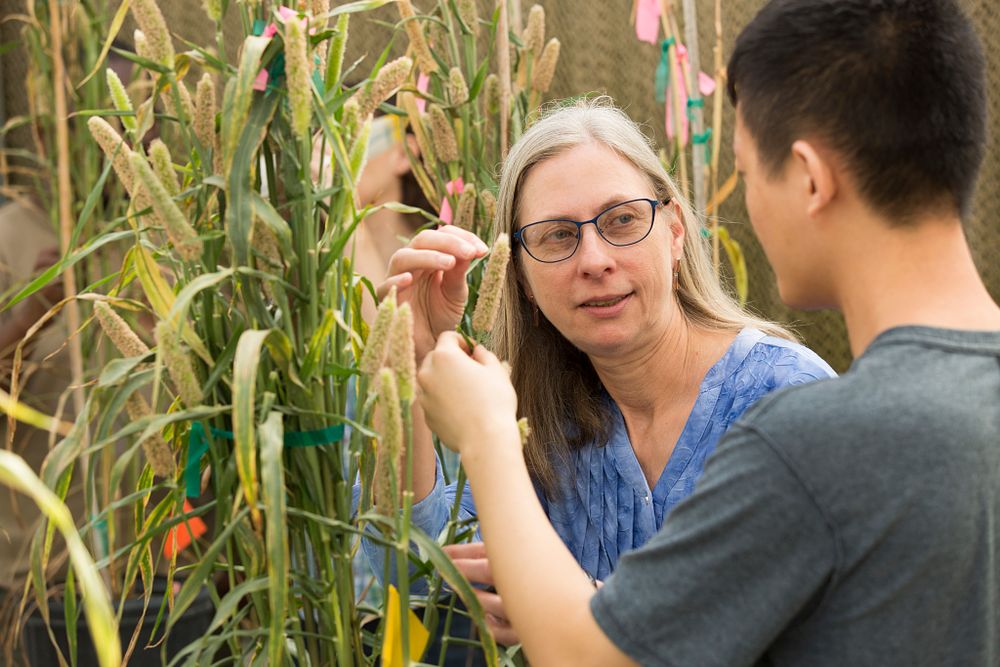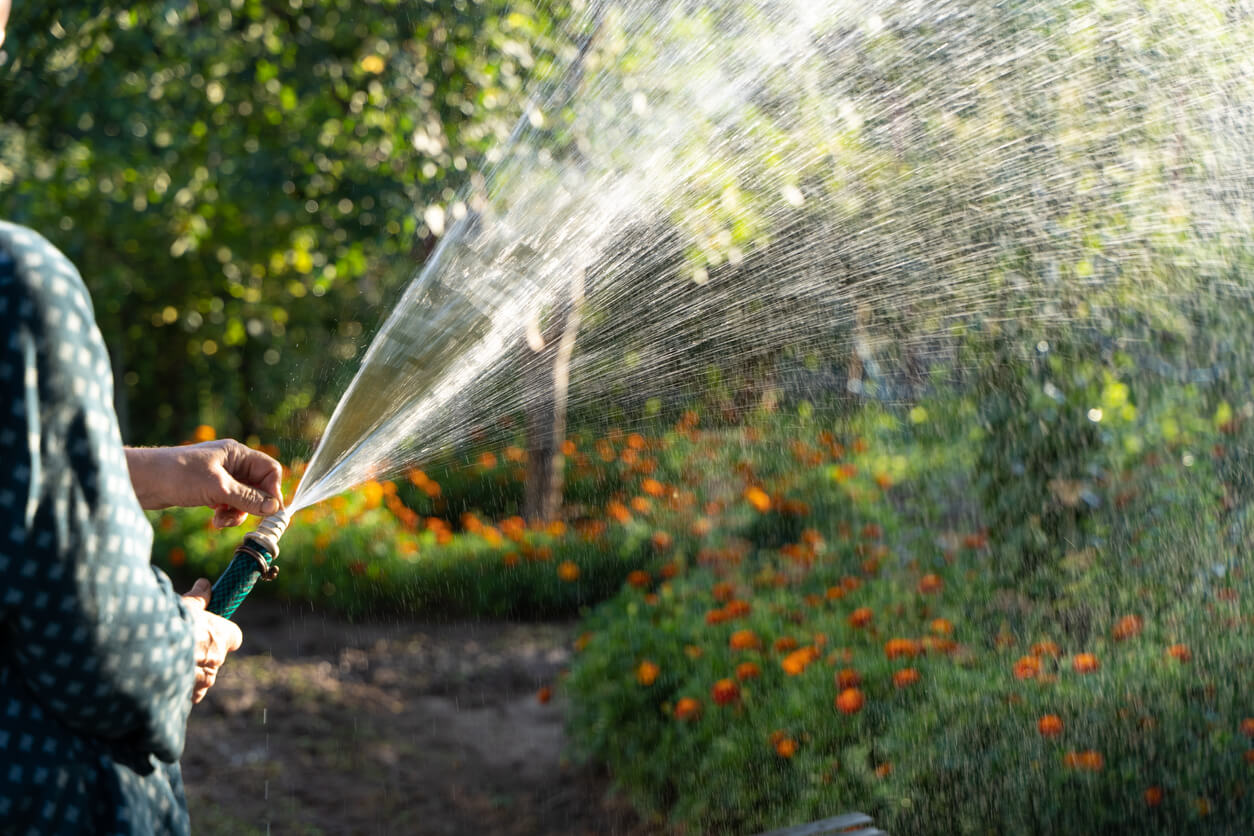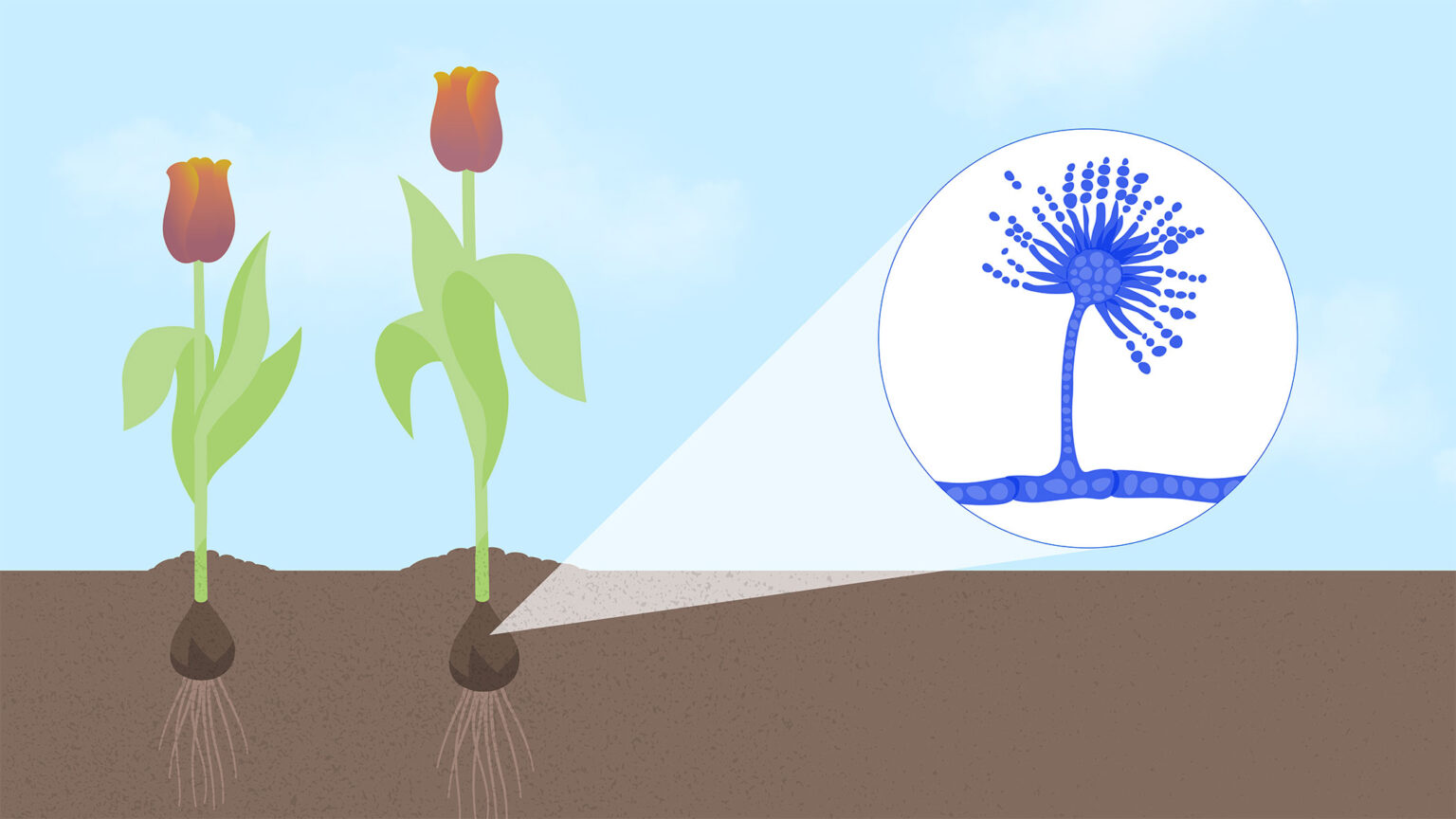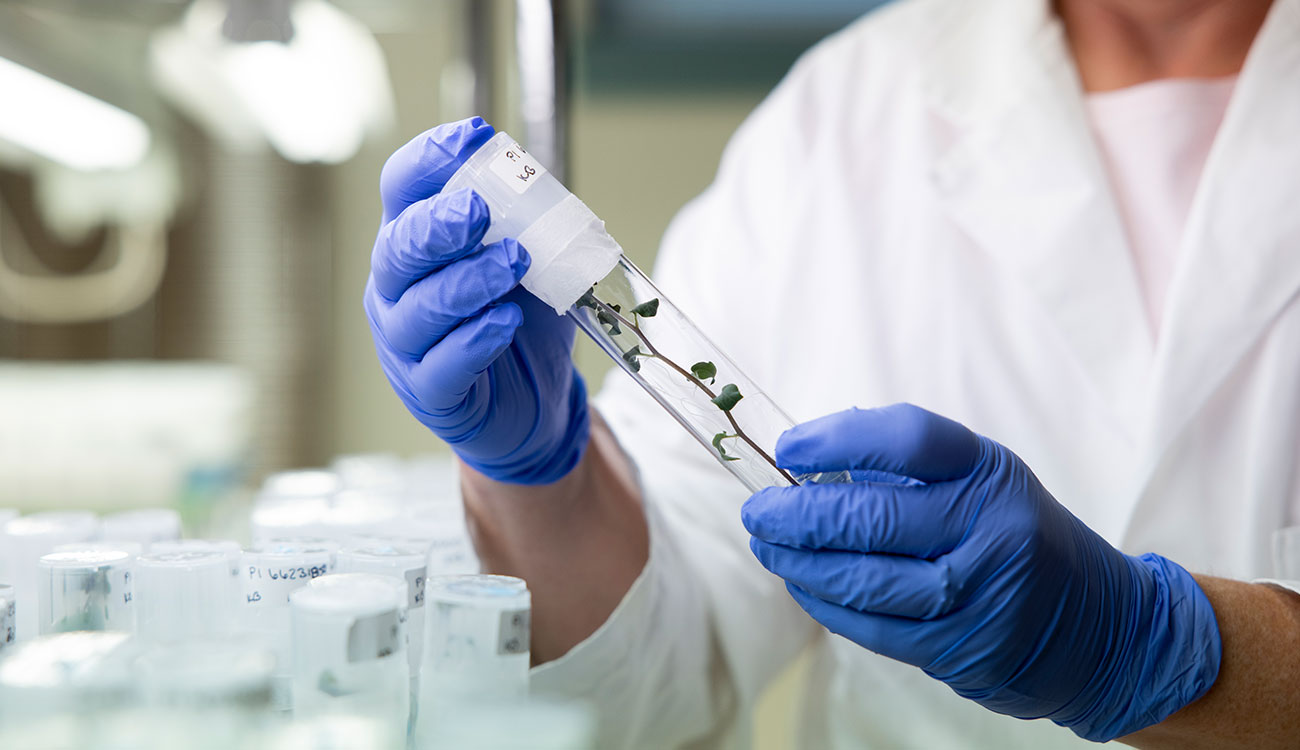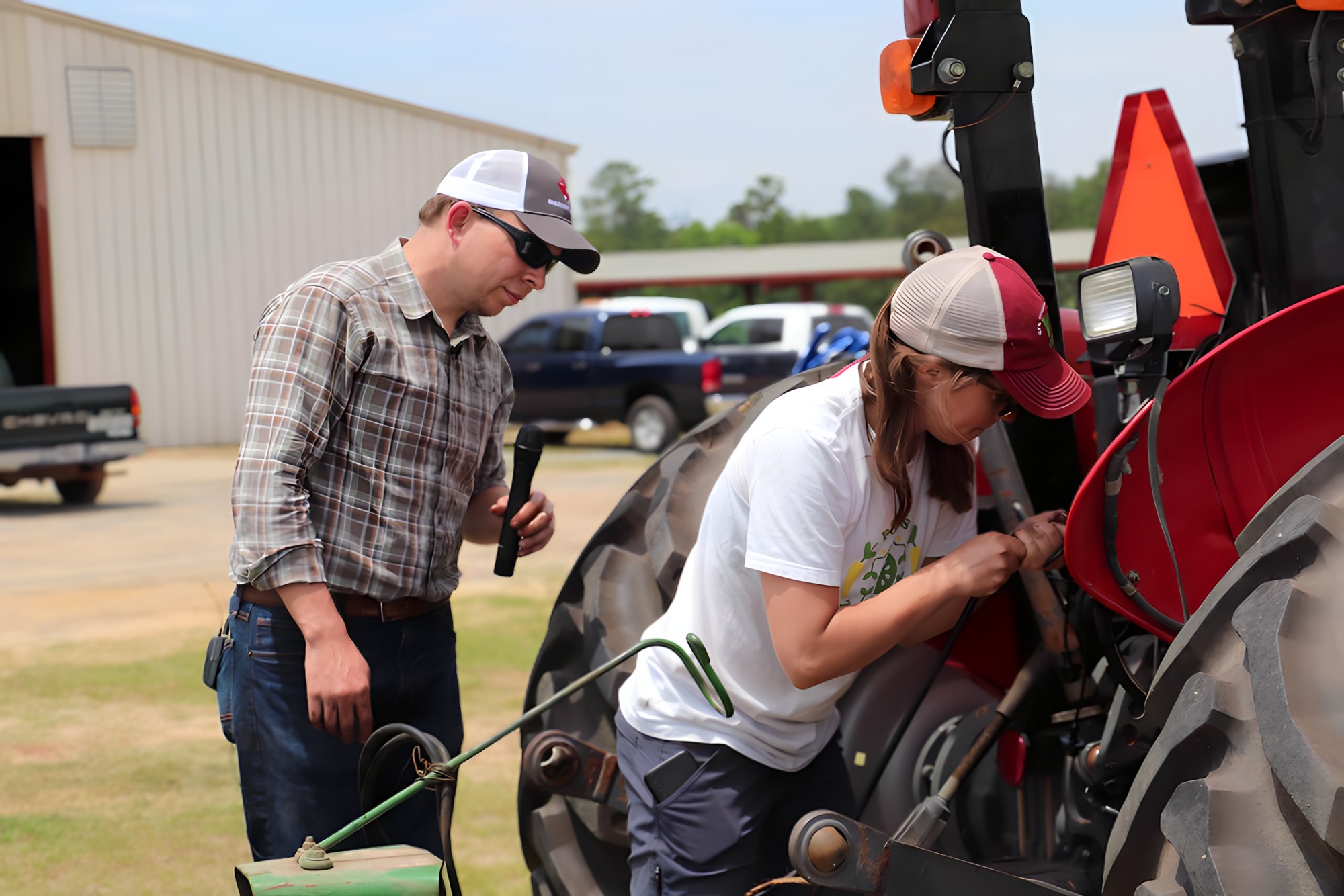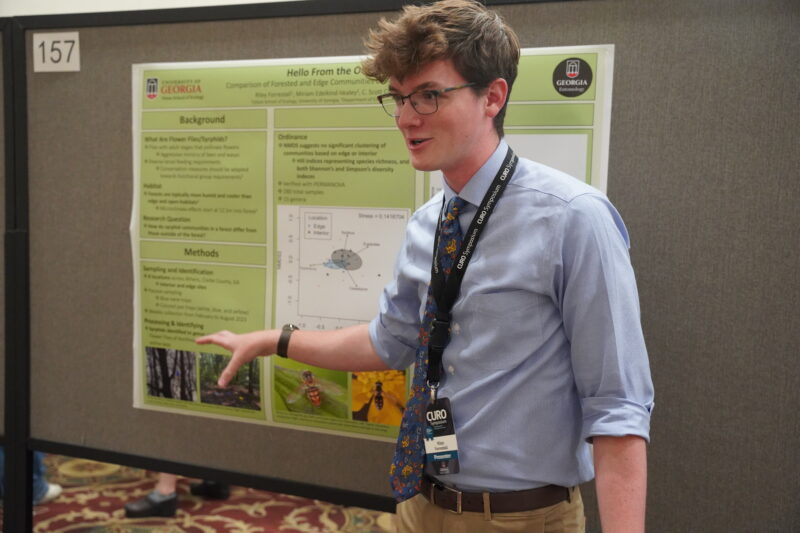Blueberries passed peaches as the state’s top moneymaking fruit a few years ago, worth more than $100 million on the farm annually. But new diseases threaten the popular berry, says a University of Georgia fruit specialist.
Blueberry necrotic ring blotch disorder and bacterial leaf scorch, are new to Georgia's blueberry crop, said Phil Brannen, a plant pathologist with the UGA College of Agricultural and Environmental Sciences.
“We are seeing two new diseases causing concern for growers with southern highbush blueberry varieties,” Brannen said. “Traditional, native varieties seem to be resistant to both diseases.”
Southern highbush varieties ripen in April and May, returning a high profit for growers during the spring market. The native rabbiteye varieties ripen in June and July for the summer market.
Blueberry necrotic ring blotch
Blueberry necrotic ring blotch disorder causes the plant to lose its leaves, defoliating long before berries are ready to be harvested. Some plants with the disease defoliate twice a season, Brannen said. So far, individual plants aren’t dying, but yields have been cut.
Necrotic ring blotch is likely caused by one or more viruses, but the verdict is still out on this unusual disease. “In places where we saw severe epidemics in 2008, we don’t see it at all today, which is unusual for a virus. We don’t know if it will come back, or if it naturally works its way out of an area,” Brannen said. “We know very little about this disease right now.”
The disease first appeared in Georgia in 2006, the first reported place in the U.S. It has now been found in North Carolina, Florida, Mississippi and South Carolina.
“It could be a new disease introduced from another country or a mutation of an existing virus,” he said. “Without regard, it does happen, and we can’t rule any of this out.”
Brannen is working with Mike Deom, a UGA plant virologist, the United States Department of Agriculture and colleagues at the University of Arkansas to identify the virus.
Bacterial leaf scorch
Bacterial leaf scorch, caused by the bacterium Xyella fastidiosa, causes what looks like burns on the blueberry leaves. The scorching occurs when the bacteria invades the xylem of the plant, preventing the plant from transferring nutrients and water.
“The plumbing of the plant is basically clogged,” he said. “The plant shows symptoms of drought stress and eventually dies.”
Some growers have cut back infected plants and managed to get another year of production, but Brannen said the infected plants eventually die.
In the field, the southern highbush cultivar Emerald appears to be fully resistant to this disease. Brannen said the varieties Winsor and Millennium can tolerate the disease, but are not completely resistant.
The most susceptible varieties are V1, O’Neal and Star. Unfortunately, timing and quality have traditionally made these varieties top picks for growers. In many locations, these varieties are being replanted to other varieties – a major expense, he said.
“If a grower has invested in V1 plants, they will have 100 percent loss in 10 years if they are infected with Xyella, losing 10 to 20 percent each year,” he said. “Growers invested in Star will see a 30 to 40 percent reduction in plants in 10 years.”
Without disease, highbush varieties could produce for 10-15 years or longer.
Blueberry futures
Right now, there are no chemicals confirmed to control these diseases, he said. But if it is determined that insects are the vectors that spread the diseases, as is the case with Xylella and possibly necrotic ring blotch, some insecticides may help.
Brannen said breeding new varieties with resistance to the diseases is the best answer.
“Breeding may have allowed the diseases to surface, so we could have inadvertently released varieties susceptible to these diseases, while our natives are resistant,” he said. “The berries may have great market characteristics, but we may realize later that they are susceptible to disease.”
Brannen is working with University of Florida scientists to develop screening programs. Field screening could take five to six years, but greenhouse screening, if possible, would be faster, he said.
“We are hopeful for a greenhouse screening program, but initial results suggest we need to screen in the field,” he said. “These diseases have been confusing and difficult to deal with.”




